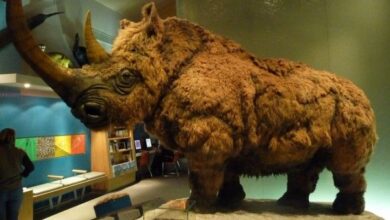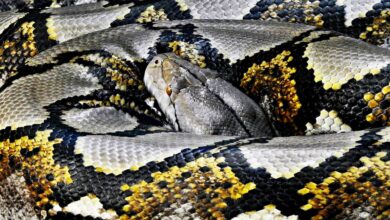Axolotl The Dragon Looking Salamander
The axolotl is a salamander. Salamanders are amphibians, which include newts, frogs, and toads. Water is required for amphibian reproduction. They will lay their eggs in water, after which the larvae will hatch and progressively metamorphose into the adult form, which could also live on land. Axolotls, on the other hand, never truly mature. They are ‘neotenous,’ which means they do not metamorphose into the respiratory system, land-living adults like most amphibians. They retain juvenile characteristics such as gills, tails, and a preference for living in the water.
Axolotl Lifespan and Health
Axolotls are generally challenging pets that do not get sick quickly. They can live for 15 years with clean water, cool temperatures, and a healthy diet. Poor water quality and extreme stress are the leading causes of illness in Axolotls. Secondary infections from parasitic infections or bacteria can occur due to poor water quality.
Salamanders in poor health will move stiffly, have pale gills, and may become thin and unresponsive. Burns on Axolotl’s skin can be caused by high temperatures or levels of ammonia, nitrites, or nitrates. If not addressed immediately, it can even result in death. This can be avoided by performing regular tank maintenance and cycling the water. You should keep checking your water parameters and setting up each watering cycle.
Axolotls may nip at each other’s gills if they are crowded together. This result in open wounds that become infected quickly. A bacterial infection can be identified by red streaks, patches, or small open sores. An infected axolotl should be immediately isolated in a “hospital tank” for treatment.
Axolotl Diet
Axolotls are carnivores that feed on aquatic insects, small fish, worms, larvae, and other amphibians in Mexico’s Xochimilco and Chalco lakes. Axolotls hunt by quickly opening their mouths to create suction. Prey is drawn into their mouths by this suction.
Every couple of days, a full-grown adult will consume two to three medium-sized night crawlers or one tablespoon of blood worms. Beef or shrimp should not be a regular part of the diet but can be given as a treat once a week. Every day, young and growing axolotls consume four small worms. As they grow older, their appetites will wane.
Axolotl Behavior
Axolotls are docile, slow-moving amphibians that are primarily active at night. Axolotls will stay out in the open at ease and relaxed, whereas shy or stressed individuals will hide. They spend most of their time at the tank’s bottom. They will also move around during feeding time and carefully stalk their prey. You may notice them digging and rearranging their decor if they have sand or plants in their tank. This is a rewarding and entertaining behavior to observe.
Salamanders can live in groups of several individuals in the wild, but they are not social and are usually found alone. Males and females will seek out each other to mate during the breeding season (March to June). Otherwise, they rarely interact with one another.
Young axolotls frequently nip at each other, and adults may eat small juveniles if kept together. Similar-sized individuals, providing plenty of room and hiding spaces are essential for reducing aggression and stress caused by overcrowding. Each Salamander requires at least 10 gallons of space.
Axolotl Size and Weight
Axolotls can grow as long as 18 inches, but they are most commonly seven to nine inches long. Adults range in weight from 5 to 12 ounces. Females are typically heavier than males, but they are not typically longer. Males have a huge vent and vertical grooves along their sides that help distinguish them. Axolotls grow slowly and gain the most weight during their first two years. However, they continue to grow throughout their lives, but at a much slower rate.
Axolotl Appearance, Colors, and Morphs
Axolotls are neoteric salamanders. This means that adults have qualities only found in newborns of other species. Their gills are an excellent example of this. Most amphibians lose their gills as they mature from larva to adult. Adult Axolotls, on the other hand, have three pairs of gill stalks behind their heads that hold filaments used for breathing. Axolotls’ most distinguishing features, in addition to their gills, are:
- Cylinder-shaped bodies.
- Small eyes.
- Large tails.
In addition to wild species, there is now a wide range of axolotl color morphs. Because of captive breeding, there are five known morph species, which are listed below in order of popularity:
Leucistic
The gills are red, and the eyes are pure white. As adults, some individuals may develop speckles.
Albino
Albino axolotls are entirely white. However, they have light pink or white eyes and pink gills compared to the Leucistic morph.
Melanoid
Melanoid is significantly darker than wild types. They lack golden irises, skin flecks, and dark red or black gills.
Green Fluorescent Protein Transgenic
Under normal lighting, they appear normal, but under black lights, they glow a bright green.
Golden Albino
They are golden yellow, with pink gills and yellow eyes. They also have shiny yellow flecks on their skin that give them a metallic appearance.




